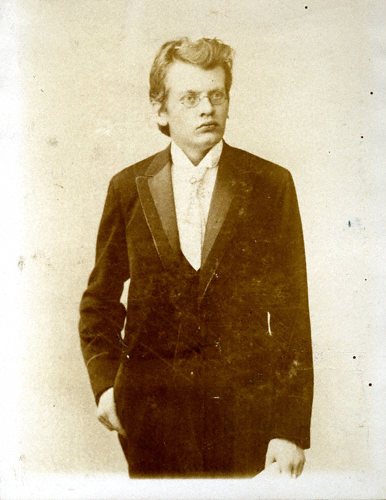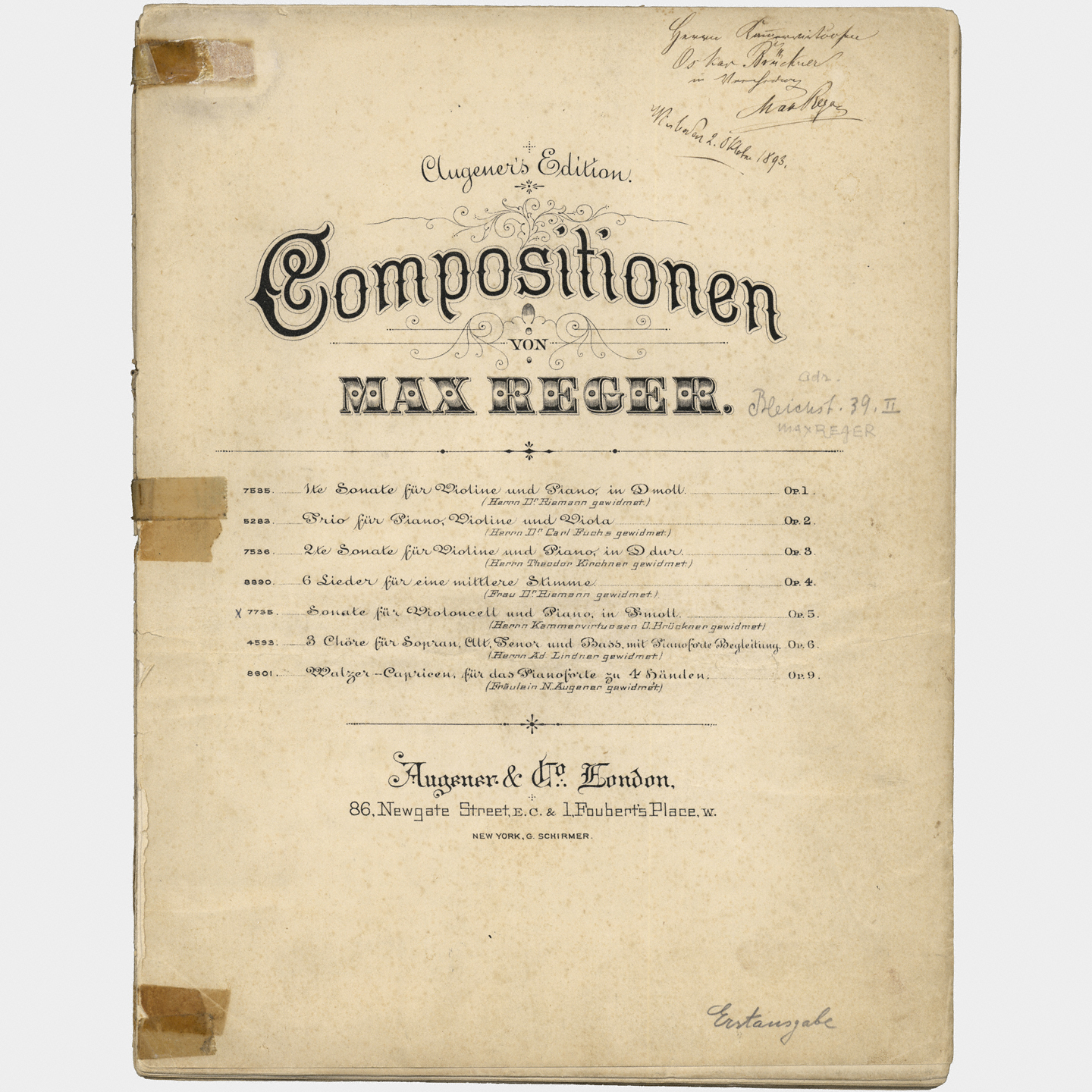1. Wiesbaden

The first five works of Reger are published by Augener & Co. at the beginning of the year. In February, Reger leaves the conservatoire as a pupil, but stays there as a member of the staff, teaching piano and organ; additionally, he gives private piano lessons, also in the house of Bagenski where in spring he meets his future wife, Elsa von Bercken, née von Bagenski. He is repeatedly heard as a pianist at the Casino and at the conservatoire, and in one concert he plays his early, then unpublished arrangement of Johann Sebastian Bach’s Prelude und Fugue in D major, BWV 532 (Bach-B1 no. 3). He sees himself having “arrived on the path of the pianist proper – the main thing, though, naturally remaining composition” (letter of 15 February 1893 to Adalbert Lindner).
Heinrich Reimann publishes the first relevant article about Reger's compositions in the Allgemeine Musik-Zeitung in July; he calls him a “hothead” and warns him of going too far, but expects great things from the newly rising talent (review). Reger becomes a reviewer for the the same periodical (until the end of 1894) and gains few friends through his uncompromising judgement. At least some positive reviews give rise to become connected with prestigious musicians and composers.

Reger strives for independence and alienates himself from Hugo Riemann's dogmatic understanding of music; he deliberately pushes back the influence of Brahms and studies the works of Franz Liszt, which Riemann had rejected. The first performance of the Cello Sonata in F minor, Op. 5, in October meets with negative criticism.
Postal items from this year whose sender or addressee is Max Reger.
Images from the Max Reger Foto Gallery that originate from this year and have a direct reference to Max Reger.
Reference
Max Reger Biography – 1893, in: Max-Reger-Portal, www.maxreger.info/biography/1893, Max Reger Biography Data, V. 3.2.0, last check: 21st December 2025.